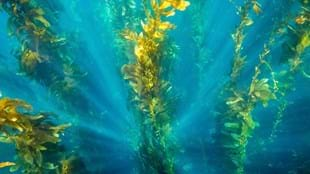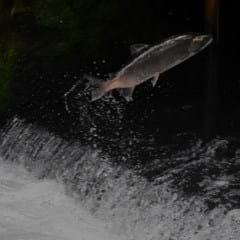We’ve now entered an age where cities run out of water. Last year Cape Town in South Africa nearly became the first major metropolis to fully deplete its water sources, panicking four million people. This year, India’s sixth largest city of Chennai used all the water in its four reservoirs, affecting 4.6 million (and causing at least one murder), Europe blazed under a summer heatwave, floods again hit the US Midwest, and the Canadian and US wildfire season began early. The years when we took water for granted, especially in drier parts of the world, are over.
Yet, while water will be one of our biggest problems in a warming future, it also holds potential to become part of the solution: humble seaweed could turn out to be a major weapon in combating climate change.
Seaweeds grow very fast, more than 30 times the rate of land plants. We’re all familiar with planting trees to take up carbon dioxide and reduce our climate footprint, and that also includes foresting and reforesting our oceans. In 2017, Australian scientist Tim Flannery released the book Sunlight and Seaweed: An Argument for How to Feed, Power, and Clean Up the World, in which he explores the potential of farming kelp, a fast-growing algae and one of the world’s most sustainable and nutritious crops. Kelp would suck up carbon dioxide from the air in the same way plants do on land.
Instead of modern industrial farming practices that leave soil poorer and more carbon in the atmosphere, seaweed holds onto it.
They say if nine percent of the ocean was covered in seaweed farms (an area about four and a half times the size of Australia), then that farmed seaweed could produce sufficient biomethane to replace all of today’s needs in fossil fuel energy, while removing 53 billion tons of CO2 per year from the atmosphere, restoring pre-industrial levels.
Sustainably-farmed seaweed aquaculture could provide humans with valuable protein in the future, when land-based methods become too difficult or expensive. Such a farm structure would also increase sustainable fish production to potentially provide 200 kg per year per person, for 10 billion people. It would also help de-acidify the ocean, provide habitat for ocean life, and help with aquaculture such as mussels, scallops, and oysters.
It’s a practice that has long been practiced in China, but is still uncommon in the West, where it is still in the early development phase. In his book, Flannery introduces us to shellfish and kelp farmer Bren Smith, who since 2011 has operated a farm in Long Island Sound near New Haven, Connecticut, and was named as one of 25 people shaping the future by Rolling Stone. The kelp, which is used for feedstock and industrial purposes, de-acidifies the seawater, which helps the shellfish grow (acidic waters compromise shell growth).
Smith and other ocean farmers have started a non-profit called GreenWave promoting underwater farming in three dimensions, using the entire water column. It’s an idea that was named one of the 25 Best Inventions of 2017 by TIME magazine, and food writer Michael Pollan has called the group’s ideas “truly inspiring” and “revolutionary”.
Farming fewer than five percent of US waters could produce the protein equivalent of three trillion cheeseburgers.
The model involves “vertical farming” – floating longlines that grow mussels, scallops and seaweed. Below are cages holding oysters and clams. Green Wave claims the project requires just 20 water-acres, a boat, and US$20,000 to get started, and once up and running the farms act as a nitrogen and carbon sink, require no fresh water, fertilizers, or feeds, and rebuild marine ecosystems.
Its impact could be colossal; the group says farming fewer than five percent of US waters could produce the protein equivalent of three trillion cheeseburgers, sequester 10m tonnes of nitrogen and 135m tonnes of carbon, and create 50 million new jobs.
Meanwhile, we should all be eating more of it beyond the occasional sushi roll. Kelp is a healthy addition to your diet and has been valued for its nutrition for centuries, adding a deep, savoury, umami flavour to many meals. Buy kelp flakes to add to your cooking and salt shaker – iodine is essential for good health. Become more interested in Japanese, Korean, and Chinese cuisine and find out about nori, wakame and kombu. The classic Korean dish miyeok guk is an easy sesame-flavoured soup that is traditionally given to postpartum mothers to help in recovery, but it’s full of nutrients for all.
Eat delicious sheets of salted, roasted kim with your rice, quickly whip up a miso soup with miso paste, chicken stock, vegetables and seaweed. Add spirulina to your smoothie, and investigate sea vegetable salads. One delicious option is Japanese-style seaweed salad, made from blanched sliced wakame, greens, shredded carrot and daikon, and a dressing of soy sauce, vinegar, dashi stock sugar, olive oil, and grated ginger, and toasted sesame seeds.
Indeed, it may pay to develop your seaweed cooking skills – with dwindling fresh water, unpredictable seasons and a warming climate making traditional agriculture increasingly unsustainable, we may all be eating a lot more of it in the future.
Naomi Arnold is a New Zealand-based author and writer specializing in environmental and health issues.
If you want more health and fitness inspiration simply sign up to Fit Planet and get the freshest insights and advice straight to your inbox.








